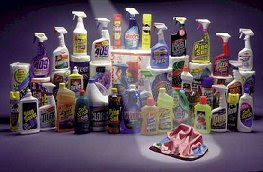Microfiber has been called the 'wonder fabric' of the 21st century. It is a high tech, advanced synthetic fiber that is made up of microscopic threads that are several times thinner than a human hair. These threads are arranged in a criss-crossed pattern that creates microscopic 'holes'. This unique structure lends microfiber all its wonderful properties.
And what might these wonderful properties exactly entail?
For one, a microfiber cloth has tremendous capacity to absorb water and other liquids. All liquid molecules get locked in the 'hole' like structure mentioned above. Thus, a microfiber cloth can soak up gallons upon gallons of water and still remain dry. This makes it an ideal material for making sportswear, cleaning cloths, mops, etc.
Microfiber cloths are also great at collecting dust and dirt. This, once again, can be attributed to the unique structure that can collect dust particles. Consequently, this fiber is used extensively in cleaning equipment.
But one of the best benefits of this wonder fabric is its anti-bacterial nature. Simply put, microbes get trapped inside the criss cross pattern made by the microscopic fibers. This makes it one of the best tools you can find to clean your house - it is naturally anti-microbial, thus you don't need any expensive cleaning solutions or chemicals.
Many manufacturers enhance the anti-microbial qualities of the cloth by combining it with anti-microbial agents such as silver or treating it with eco-friendly chemicals.
On the downside, microfiber cloth is still a bit more on the expensive side. While in the long term, using them will invariably save you money on cleaning solutions, their slightly higher upfron costs make them a bit unattractive for the average consumer.
But consider the fact that each cloth can last you several times longer than a regular cleaning cloth. When you factor in this quality, buying microfiber cleaning cloths starts making perfect sense.
Thursday, June 30, 2011
Subscribe to:
Post Comments (Atom)


No comments:
Post a Comment